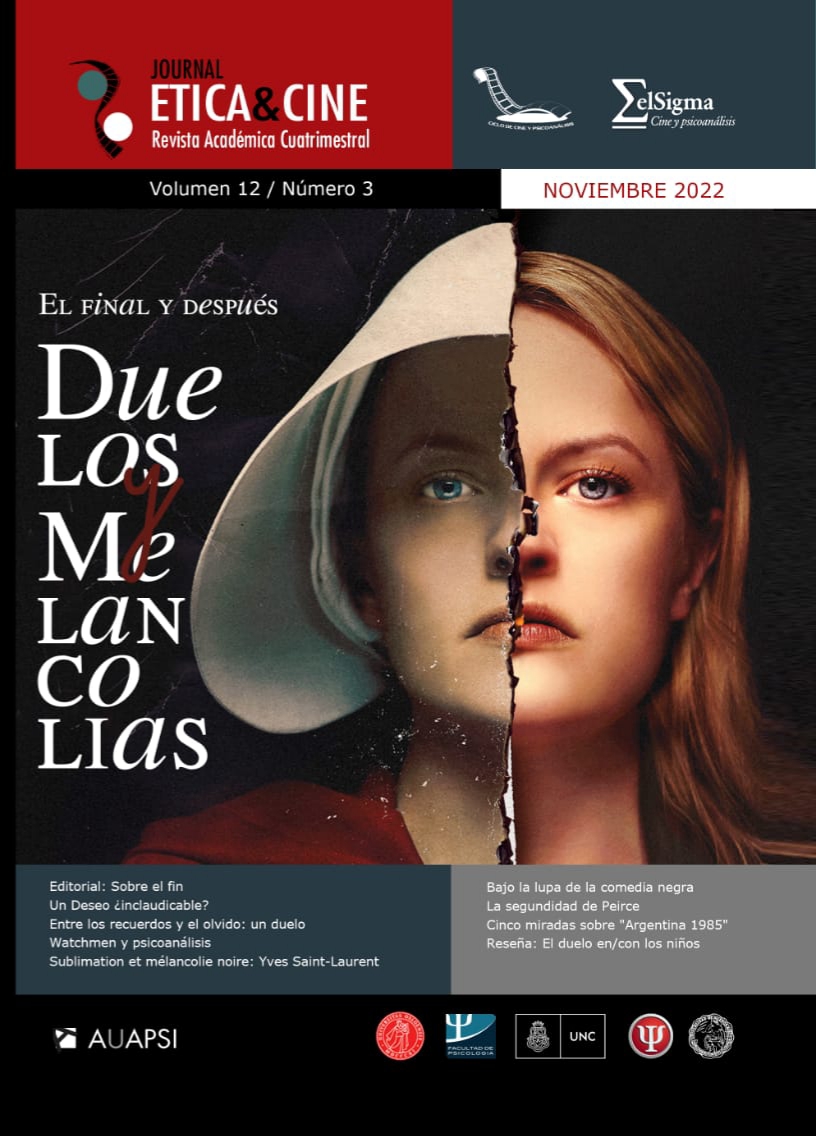Peirce’s secondness in true crime documentaries. Annotations on The Jinx: The Life and Death of Robert Durst
DOI:
https://doi.org/10.31056/2250.5415.v12.n3.39645Keywords:
Charles Peirce, Documentary cinema, Secondness, Semiotics, True crimeAbstract
In the 21st century, true crime documentaries have had a greater presence in the field of consumption and distribution of audiovisual content, fostering a media debate on the judicial cases presented within their narrative content. By trying to carry out a detailed reconstruction and monitoring of different real events that led to police tragedies, this type of documentaries fosters a close link between cinematographic reproduction and reality that has revitalized contemporary documentary practice from an ethical point of view. Through the case study of The Jinx: the life and death of Robert Durst, a true crime documentary that has had important relevance in the recent public and judicial sphere, we propose to analyze the link between the documentary and reality from the triadic model of the sign proposed by Charles Sanders Peirce, and specifically, on how secondness is a mode of meaning that gives documentary filmmaking the ability to transfer the textures of reality to an indexical level.
References
Andacht, F. (2005). La reflexividad mediática en el género indicial documental. Enl@ce: Revista Venezolana de Información, Tecnología y Conocimiento, 2(3), pp. 75-92.
Andacht, F. (2010). Indicios ficcionales para un testimonio singular: Shoah o la búsqueda de un relato histórico indecible. Arquivo Maaravi: Revista Digital de Estudos Judaicos da UFMG, 4(6), pp. 43-58.
Bazin, A. (1990). ¿Qué es el cine? Ediciones Rialp.
Català, J. (2010). Panorama desde el puente: nuevas vías del documental. En A. Weinrichter (Ed.), .doc: El documentalismo en el siglo XXI. Festival Internacional de Cine de San Sebastián.
Corner, J. (2002). Performing the real: Documentary diversions. Television & new media, 3(3), pp. 255-269.
Deleuze, G. (1983). La imagen-movimiento. Estudios sobre cine 1. Paidós.
Horeck, T. (2019). Justice on demand: True crime in the digital streaming era. Wayne State University Press.
Jarecki, A., Blum, J. y Smerling, M. (Productores ejecutivos). (2015). The Jinx: the life and deaths of Robert Durst [Serie de Televisión]. HBO Documentary Films; Blumhouse Television; Hit the Ground Running.
Morton, P. (2021). Stylistic choices in true-crime documentaries: the duty of responsibility between filmmaker and audience. Media Practice and Education, pp. 1-14.
Nichols, B. (1996). La representación de la realidad. Paidós.
Pasolini, P. P. (2005). Empirismo herético. Editorial Brujas.
Peirce, C. S. (1974). La ciencia de la semiótica. Nueva visión.
Romero Domínguez, L. (2020). Narrativas del crimen en los documentales de no ficción. Revista Panamericana de Comunicación, (2), pp. 11 20. https://doi.org/10.21555/rpc.v0i2.2332.
Vigo, J. (2010). El punto de vista documentado. En: Thevenet, H. y Romaguerá, J. (Eds.), Textos y manifiestos sobre el cine (pp. 134-138). Madrid: Cátedra.
Downloads
Published
Issue
Section
License
Copyright (c) 2022 Ética y Cine Journal

This work is licensed under a Creative Commons Attribution-ShareAlike 4.0 International License.
Los autores que publiquen en Ética y Cine Journal aceptan las siguientes condiciones:
Los autores/as conservan los derechos de autor © y permiten la publicación a Ética y Cine Journal, bajo licencia CC BY-SA / Reconocimiento - Reconocimiento-CompartirIgual 4.0 Internacional. La adopción de esta licencia permite copiar, redistribuir, comunicar públicamente la obra, reconociendo los créditos de la misma, y construir sobre el material publicado, debiendo otorgar el crédito apropiado a través de un enlace a la licencia e indicando si se realizaron cambios.

Este obra está bajo una licencia de Creative Commons Reconocimiento-CompartirIgual 4.0 Internacional.




